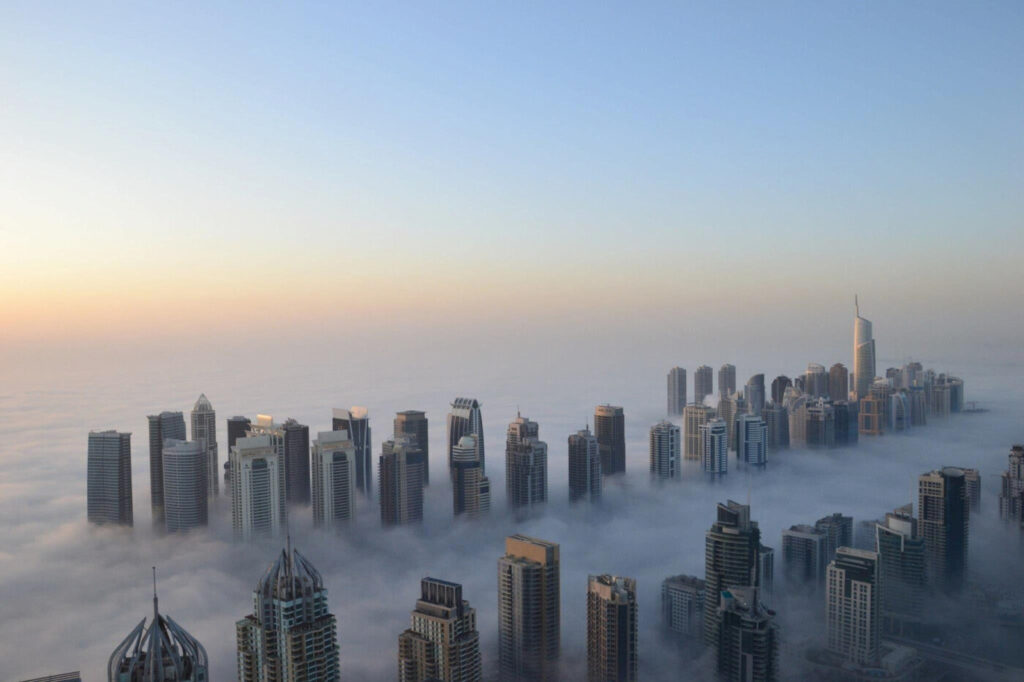
Dubai today is one of the largest cities in the United Arab Emirates. In addition, Dubai is the UAE’s most important commercial and financial center, with an administrative center and deep sea port.
Dubai is located on the shores of the Persian Gulf northeast of the capital Abu Dhabi, adjacent to Sharjah. Geographic coordinates: 25°15′ north latitude, 55°18′ east longitude. The city is 134 km long and 35 km wide.
From 1954 to 1971, Dubai was the administrative center of the British protectorate. Dubai hosts a variety of festivals, international conferences, and exhibitions every year.
Later, in the 7th century AD, Islam came to the territory of Dubai, and after that, Dubai became part of the Arab Caliphate. In the 8th century, Dubai fought with the governors of the caliph. As a result of the battles, Dubai practically became independent. However, at the end of the 9th century, Dubai became dependent again, and the emirate began to submit to the rule of the Abbasids.
READ: UAE Citizenship: Opportunities to Obtain a New Passport for a Foreigner
Note! The territory where the emirate of Dubai is situated today was under the rule of the Persian Achaemenid dynasty since the 6th century BC. Later, in the 3rd and 4th centuries AD, it came under the ownership of the Sassanid dynasty.
Until the 18th century, countries such as Portugal, the Safavid Empire, Turkey, and Oman fought for the territory of Dubai.

In the 18th century, local sailors engaged in trade clashed with the East India Company.
However, in 1820, the East India Company sent military forces to this coast and signed a treaty, resulting in Oman being divided into three parts. In addition, treaties that were concluded in 1835, 1839, 1853, and 1892 helped establish a British protectorate in what is now the emirate.
The history of the settlement of the territory of Dubai appears in 1799. At the very beginning of the 19th century, the population of the emirate was only 1,200 people. It was a very small population for such a large area. Until 1833, Dubai was part of the territory of the Emirate of Abu Dhabi; subsequently, until independence in 1971, Dubai belonged to the Trucial Oman.
However, despite such dangerous conditions, traders were still attracted to the territory of Dubai. In addition, the Emir of Dubai greatly reduced taxes, which further attracted traders from Sharjah. At that time it was the center of trade.
Foreign traders were attracted due to the favorable location conditions such as proximity to Iran and the port of Dubai. Traders and artisans from the territory of the Qajar state showed great interest. Eventually, the traders themselves began to settle in Dubai.
In the 19th century, two disasters struck the city at once:
At the beginning of the 20th century, Dubai became the most important port in the Persian Gulf. In 1910, the population of Dubai grew to 10 thousand people, but this is still a very small figure. There were about 350 trading shops located on the coast of Deira.

At that time, Dubai received its income mainly from pearling, and everything was going well until the crackdown that occurred in 1930. It was very difficult to overcome the consequences, since in Japan they began to artificially grow pearls on specially equipped farms.
For a long time, Dubai had to use and interact with the oil-rich emirate of Abu Dhabi, but in 1966, Dubai discovered its own oil reserves. Although they were smaller compared to Abu Dhabi’s reserves, this allowed the economy to begin to grow.
Since 1969, Dubai has experienced a significant increase in population and revenue due to the discovery of oil; labor mainly came to Dubai from India and Pakistan. Thanks to oil production and its subsequent sale, Dubai was able to rise to the ranks of the richest cities in a surprisingly short time.
However, today oil production accounts for only 5% of Dubai’s total income. The main increase in funds and replenishment of the state treasury was taken over by tourism, aviation, real estate, and financial services.
Weather conditions in Dubai are critically hot. In addition, Dubai is often abnormally hot and has been defined as the hottest city in the world. The average shade temperature in summer is +35 degrees, sometimes on the hottest days of summer the temperature can reach +50 degrees in the shade. Winter is relatively cool, comparable to European summer, with warm days and cool nights. In January the average temperature is +20 degrees. January in Dubai is considered the coldest month.
READ: Top 3 Developing Areas in Dubai: Buying Property
Rainfall is a very rare luxury in Dubai. About 80mm falls annually. Most precipitation can occur in late winter and early spring; from May to October there is no precipitation at all.